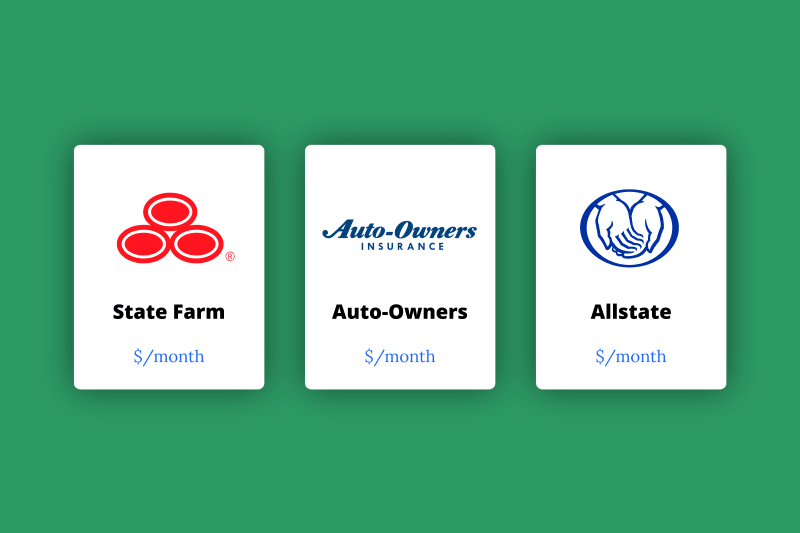Navigating the road of car insurance as a young driver can be as daunting as pulling out of a parallel parking spot for the first time. The path is filled with complex terminology, myriad coverage options, and the dreaded potholes of high premium costs. But with the right map in hand — or on screen — you can find a route that not only keeps you legally covered but also saves you a bundle. This guide is geared toward those seeking the most inexpensive car insurance without compromising on quality coverage.
Read more: top rated auto insurance company
Understanding Car Insurance Basics
Before we can set our sights on the most inexpensive car insurance, we need to break down the basics. Car insurance comes in several flavors, with the most common being liability, collision, and comprehensive, each serving different purposes. Liability insurance pays for damage you cause to others, while collision and comprehensive protect your vehicle under different circumstances. In most states, liability insurance is mandatory, with the minimum amounts varying.
Here are some key coverages to be aware of:
- Bodily Injury Liability (BIL): Covers injuries that you or the designated driver cause to someone else.
- Medical Payments or Personal Injury Protection (PIP): Can extend to your own medical expenses resulting from a car accident, regardless of who was at fault.
- Property Damage Liability (PDL): Covers you if your car damages someone else’s property.
- Underinsured/Uninsured Motorist Coverage: Steps in if you’re in an accident with a driver who doesn’t have sufficient liability coverage to fully pay for your costs.
Starting Your Search for Affordable Coverage
Shopping around is the name of the game when looking for affordable car insurance. Different insurance companies have various algorithms that determine your rates, resulting in a wide range of quotes. Online comparison tools can be highly beneficial in simplifying this process.
Factors Affecting Your Premium
Several factors can influence your insurance premiums, including:
- Age: Young drivers often pay the highest rates due to their relative inexperience on the road.
- Driving Record: Traffic violations and accidents on your record can raise your premiums.
- Type of Car: The car’s make, model, year, value, and safety features play a role in determining your rates.
- Credit Score: In some states, your credit score can impact your insurance rates.
It’s also worth noting that you doesn’t have to sacrifice on customer service for a low premium. Look for insurance companies that offer 24/7 support and customer-friendly tools like mobile apps that simplify the claims process.
Discounts Are Your Best Friend
Car insurance companies offer a plethora of discounts that can significantly reduce your premium. Here are some common ones to keep an eye out for:
- Good Student Discount: Maintain a high GPA, and you could save on your insurance.
- Multi-Policy Discount: Bundle your car insurance with renter’s or homeowner’s insurance for savings.
- Safe Driver Discount: Refrain from accidents and traffic violations, and you may be eligible for reduced rates.
- Driving Device Discounts: Installation of anti-theft devices or telematics can lower your premium.
Don’t hesitate to press insurance agents on potential discounts — it can make a world of difference in your final payment.
Meeting Legal Requirements with the Most Inexpensive Options
Even when working within a tight budget, it’s essential to meet your state’s legal insurance requirements. While opting for bare-bones coverage might be tempting, it’s not always the wisest choice, especially for young drivers who statistically face a higher risk of accidents.
The cheapest policy might not cover all the bases, leaving you vulnerable in the event of a severe accident. Instead, consider low-cost options like increasing your deductible, opting for pay-as-you-drive insurance, or choosing a policy that emphasizes the coverage you need most while trimming the rest.
Consider Usage-Based Insurance
Usage-based insurance (UBI), also known as pay-as-you-go, can be a great, budget-friendly option. Instead of standard fixed premiums, you pay based on how, when, and how much you drive. To determine rates, insurers often use telematics devices that track your driving habits. If you’re a careful driver, UBI could lead to substantially lower costs.
The High Deductible Trade-off
Your deductible is the amount you pay out of pocket before your insurance kicks in. Opting for a higher deductible can result in lower monthly premiums, which is particularly advantageous if you rarely have to file a claim. It’s a calculated risk, so be sure you can afford to pay your deductible in the event of an accident.
Leveraging Technology to Your Advantage
In the digital age, technology offers numerous tools to help you find and manage your car insurance. Mobile apps from insurance companies make it easier than ever to:
- Compare quotes
- Purchase a policy
- Make a claim
- View policy documents
- Get help on the go
These tools can simplify your insurance experience and potentially save you money by streamlining the process.
Keep an Eye on Future Discounts
Some insurance companies may automatically review your policy every six months or a year for new discounts, such as an improved credit score or a cleaner driving record. Others may provide tools that forecast potential savings in the future based on your current actions. Take advantage of these services to continually drive down your costs.
Creating a Driving Profile That Sings (Discounts, That Is)
One of the most powerful tools in securing the most inexpensive car insurance is your driving profile. This encompasses your record, registration details, and maintenance of a favorable credit score.
Monitor Your Credit and Driving Record
Regularly checking your credit report and understanding how it impacts your insurance rates is an excellent proactive measure. Likewise, staying cognizant of your driving record will also affect your premiums positively or negatively. If you spot any errors, resolve them as quickly as possible to avoid unnecessary rate hikes.
Alternative Transportation Methods
The less you drive, the less you’re exposed to accidents, and the less you’ll pay for insurance. If public transportation, biking, or carpooling are viable alternatives, use them when possible. Insurers might offer a low-mileage discount if you stay under a certain threshold.
Continuing Education: Lowering Your Insurance Over Time
The learning curve isn’t limited to your time behind the wheel. Understanding your policy and knowing when and how to adjust your coverage can lead to significant long-term savings.
Regular Insurance Reviews
It’s a good practice to review your insurance policy annually, or even semi-annually, to ensure it still meets your needs and that you’re getting the best deal. Life changes, and so do your insurance needs, which could result in increased or decreased coverage requirements.
Defensive Driving Courses
Completing a defensive driving course can not only make you a safer driver but can also earn you a discount on your insurance. Many states and insurance companies offer defensive driving courses for young drivers, so check with your provider to see if this might be a viable option for cutting costs.
The Fine Print Is Your Friend
Understanding your policy details is key to getting the most out of your coverage while ensuring you’re not paying for unnecessary add-ons. Don’t shy away from the fine print — it’s where the coverage terms and any potential loopholes lie.
Be Selective with Optional Coverages
While some optional coverages might be essential for you, others may be services you never use. Consider your individual needs carefully, and only select the optional coverages that make financial sense for your situation.
Know When to Reevaluate
Life changes can mean that what worked for you a year ago isn’t the best option now. Stay on top of policy renewal dates and make any necessary adjustments accordingly.
Making Inexpensive Car Insurance Work for You
The quest for the most inexpensive car insurance is not just about finding the lowest number at the end of the quote. It’s a combination of understanding your personal needs, leveraging every available discount, and being strategic in your approach. For young drivers, this cost-saving endeavor is a step toward financial responsibility and independence on the road.
While the term ‘cheap car insurance’ may carry a negative connotation — often associated with subpar coverage or lackluster service — that doesn’t have to be the case. With the right research, diligence, and a willingness to engage with your policy, the most inexpensive car insurance can still deliver robust protection and peace of mind.
Driving is a critical part of your life, but it need not be a costly one. By turning every stone, utilizing every tool, and staying active in your insurance management, you can pave the way to affordable, reliable car insurance that supports you on your road to success. Safe travels!

